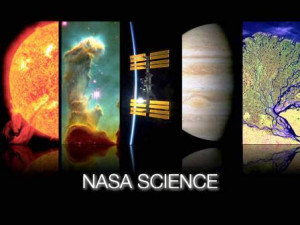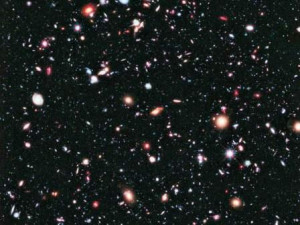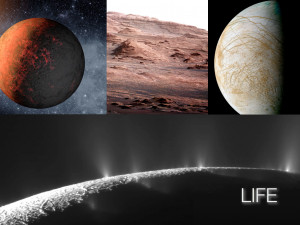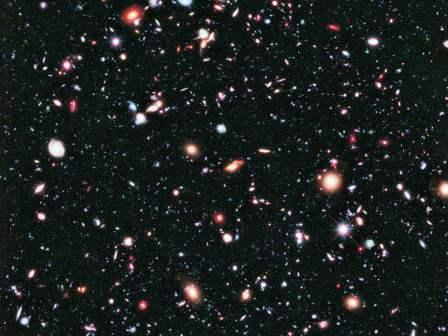Dr. Ellen Stofan joined me on The Business of Government Hour to explore her role, NASA’s science priorities, efforts at promoting science, technology engineering and mathematics (STEM) education, and space science successes. Here’s an overview of our conversation.
NASA lead s the nation on a great journey of discovery, seeking new knowledge and understanding of our Earth, sun, solar system, and the universe— out to its farthest reaches and back to its earliest moments of existence.
s the nation on a great journey of discovery, seeking new knowledge and understanding of our Earth, sun, solar system, and the universe— out to its farthest reaches and back to its earliest moments of existence.
To do this, it invests on the order of $3 billion annually in fundamental and applied research and technology development across a broad range of topics, including space and earth sciences, life and physical sciences, human health, aeronautics, and technology.From space, in space, and about space, NASA’s science vision encompasses questions as practical as hurricane formation, as enticing as the prospect of lunar resources, and as profound as the origin of the universe. To ensure the success of the space program for generations to come, NASA must craft serious, long-term goals and coherent, thoughtful plans based on a big picture point of view. Dr. Ellen Stofan, NASA’s Chief Scientist provides that big picture to the NASA Administrator Charlie Bolden. Dr. Stofan joined me on The Business of Government Hour to explore her role, NASA’s science priorities, efforts at promoting science, technology engineering and mathematics (STEM) education, and space science successes. Here’s an overview of our conversation.
“My primary function,” says Dr. Stofan, “is to advise the administrator on science policy across the agency, ensuring they are aligned with and fulfill the administration’s science objectives. I advocate for NASA science in the context of broader government science agendas and works closely with the White House Office of Science and Technology Policy and the Office of Management and Budget. We have an associate administrator for science whose job it is to administer our science program budget. My job is to look at broad scale science policy across the agency, across our multiple directorates; which include human exploration, technology, science and aeronautics, and give the administrator kind of a big picture point of view.”
Stofan leads a small office with a wide focus. “We have an eye on all the science NASA is doing ensuring that our programs are on budget, on schedule, and achieving their science objectives. We preserve and promote the integrity and credibility of NASA scientific research programs. We work to identify opportunities to leverage the science assets of individual organizations and missions to the maximum benefit of the agency. We seek to demonstrate and communicate the societal impact and breadth of NASA science investments and foster communication and coordination within and outside the science community at NASA. We work with NASA colleague to identify exciting and emerging areas of science research and support their development through cooperation with NASA’s engineering and technology organizations.”
Turning science fiction into science fact…At NASA every day we’re trying to turn science fiction into science facts. One of our top challenges is sending humans to Mars by the 2030. How do you take an agency of over 17,000 civil servants, nine NASA centers, and one Federally Funded Research and Development Center (FFRDC) spread all across the country and make this objective a reality? How do you move all these resource forward, making sure we’re all in sync? We work hard every day to do just that using the taxpayer dollars to the maximum effect. Ultimately, it is our challenge every day positioning the NASA a leader in exploration, in discovery, and in science.
Going to my first rocket launch…I attended to my first rocket launch when I was four years old. My dad was a rocket engineer at the NASA’s Lewis Research Center in Cleveland, which is now Glenn Research Center. He worked on launch vehicles. That rocket actually blew up on the pad, which is probably why I never wanted to be an astronaut. That said, I grew up in NASA and when I was a child I always defended the importance of NASA’s mission and why it was important to spend money on science and technology — that’s when I was about ten years old.
I was also one of those kids who picked up rocks and seashells. I loved the outside world. I became enamored with geology. I was like wow people get paid for picking up rocks for a living. We can understand the history of the earth by looking at these layers of rocks. I just thought that was amazing that you could read landscapes and get history and information out of them. I thought okay I want to be a geologist. When I was about 14 my father was in charge of the launch vehicles that launched the Viking landers, which were the first two landers on Mars. We attended that launch. They had presentations by the mission scientists to explain why we were exploring Mars to understand this red planet with water flowing across the surface and its past where maybe at one point there was life. This guy name Carl Sagan was talking about why we needed to explore Mars. I thought okay I’m sold. That’s it; I received a PhD in planetary geology. I studied the surface of Venus primarily for my PhD, worked on a number of NASA missions, mission to Venus. I’m on the Cassini m ission that’s studying Saturn right now.
ission that’s studying Saturn right now.
Sending a boat to sea on a Saturn moon…Prior to becoming NASA chief scientist, my most significant leadership role was leading for five year a proposal to send a boat to a sea on Titan, which is a moon on Saturn. We made it through an initial round, but then we eventually lost to another NASA mission that was selected. I was leading a team of people, trying to do something really hard — sending a floating probe to a sea on a very distant moon. This effort taught me a lot about leadership styles, but it also introduced me to great leaders. I worked with Dr. Steve Saunder a project scientist on the Magellan mission to Venus. He taught me early the importance of listening for a leader. As a leader, you always have to listen to people around you, understand the situation, and understand what’s motivating those who work with you.
Today, NASA Administrator Charlie Bolden exemplifies a great leader. He is extremely passionate about the agency and its mission. He has a very clear vision, which is critical to any successful leader. Bolden is able to communicate that vision effectively, which is another trait of an effective leader. He is terrific at communicating that vision be it upward, outward, and beyond.
Turning vision into scientific discovery…Along with its most noted focus on the science of human exploration, NASA also have a handful of core science areas:
- Earth Science: Studying planet Earth from space to advance scientific understanding and meet societal needs exploring questions such as: How does the Earth system respond to natural and human-induced changes?
- Planetary Science: Advancing scientific knowledge of the origin and history of the solar system, the potential for life elsewhere, and the hazards and resources present as humans explore space exploring questions such as: How did the solar system evolve to its current diverse state?
- Heliophysics: Understanding the Sun and its effects on Earth and the solar system exploring questions such as: How and why does the Sun vary? How do the Earth and planetary systems respond?
- Astrophysics: Discovering the origin, structure, evolution, and destiny of the universe, and search for Earth-like planets exploring such questions as: What are the origin, evolution, and fate of the universe?
For our solar system, we’re doing amazing things. We recently launched a mission to return a sample from an asteroid called OSIRIS-Rex to earth. The first time since the 1970’s with the Apollo mission that we’ve returned samples. We’re excited about having rocks coming back from another body. Unfortunately, they are scheduled to arrive 2023.
Since this summer, we’ve had the spacecraft Juno orbiting around Jupiter. Juno will improve our understanding of the solar system’s beginnings by revealing the origin and evolution of Jupiter. Specifically, Juno will determine how much water is in Jupiter’s atmosphere, which helps determine which planet formation theory is correct (or if new theories are needed); look deep into Jupiter’s atmosphere to measure composition, temperature, cloud motions and other properties; map Jupiter’s magnetic and gravity fields, revealing the planet’s deep structure; and explore and study Jupiter’s magnetosphere near the planet’s poles, especially the auroras – Jupiter’s northern and southern lights – providing new insights about how the planet’s enormous magnetic force field affects its atmosphere. Of course we have New Horizons continuing its push out into the Kuiper Belt. To say that New Horizons shook the foundation of planetary science is an understatement—discoveries already culled from the pictures and compositional and space environment readings have not only introduced us to the Pluto system, but hint at what awaits as scientists examine other worlds in the Kuiper Belt.
As we move outward across our solar system, we’re always focusing on trying to answer some fundamental questions. Where did Earth come from? How did we get to a habitable environment on Earth? What’s the potential in the future for this planet? We are also asking what if: an asteroid possibly hitting Earth in the future or a coronal mass ejection which might come towards Earth. What are the hazards out there to our planet?
The only way we can answer those questions about Earth’s past, present, and future is to understand our neighborhood, our solar system. With our big telescopes from Kepler to James Webb, NASA is asking these basic questions about the origin of the universe. What’s the matter that makes up the universe? How does the universe behave and then how does that link back to Earth? Are we alone and is there life beyond Earth?
The work being done on the International Space Station helps move our efforts forward by trying to understand how do we get humans to Mars safely. Can we keep astronauts healthy in microgravity for extended periods of time? It’s about seven to eight months to Mars so seven to eight months there, seven to eight months back. That’s a lot of time in microgravity. Scott Kelly was just up on the ISS for about a year. We’ve learned much from this effort. This information allows us to identify mitigations to the health effects that do occur. For example, we know if the astronauts exercise for about an hour and a half every day, they’ll come back with about the same bone density and muscle mass as they left with, but that’s a lot of exercise every day. Besides experiments on human health and space exploration, we have large equipment on the ISS. How can we miniaturize that for the transit vehicle that will take astronauts to Mars?
With all this going on NASA always comes back to this planet with our over 19 missions studying this planet right now, how is our planet changing? How gather and transform data related to issues on Earth that can be useful to lay people better informing decisions such as: how much to water crops, how bad is the next storm surge going to be, and what are the effective of sea level rise on my community? We have all sorts of science data collected from trying to understand our changing planet how can it be used to mitigate some of those effects of climate change. In everything we do at NASA, we are turning vision into scientific discovery. This is just a snapshot of the many efforts we are pursuing.
You’re never really sure until you have evidence…If you go back to this question of are we alone, there’s a very famous equation called the Drake Equation that looks at that potential. The Drake Equation is used to estimate the number of communicating civilizations in the cosmos, or more simply put, the odds of finding intelligent life in the universe. N = The number of civilizations in the Milky Way galaxy whose electromagnetic emissions are detectable. While we certainly knew there were billions of stars in our galaxy, billions of stars in the universe, and suspected many of them would have planets around them, we couldn’t confirm it until the Kepler telescope. You can have a hypothesis, but until you have evidence you’re not really sure. Kepler has confirmed just how common planets are out there. It has detected three planet systems, five planet systems, and seven planet systems. Given his higher resolution capacity, Kepler has the ability to detect planets between the size of Earth and Neptune. Previously, we could only detect larger planets the size of Jupiter or Saturn. These large planets are gas giants and not likely to be habitable. Kepler discloses to us “earth-size” planets that could be “habitable.”It found huge numbers of planets in that size category. Prior to Kepler, we had no idea how common Earth size planets were in the universe. Planet size is important because in order to sustain life planets need to be large enough to sustain an atmosphere conducive to life. The findings from Kepler have informed and revolutionized our views on the potential for there being habitable planets out there.
The James Webb telescope launching in 2018 will be the next great observatory following from Hubble. Webb telescope is infrared while Hubble was a visible near infrared. James Webb has an extended range and a number of different focuses. It can look much deeper into space. The deeper you look into space, the deeper in time you are looking because the light takes so long to come from its point of origin to the telescope that in this case we’re going to actually be looking at basically just tens of millions of years after the big bang which is much further back in time than we’ve ever been able to see before with the telescope. It will help us understand what was happening in a very young universe. Webb can also look at the atmospheres of some of these extra solar planets. We can discover whether these planets around other stars have oxygen, carbon dioxide, methane, or water. If we do find them, it may be proof that these planets are potentially habitable.
Why not go straight to Mars? When trying something as difficult as getting humans to Mars in 2030 it’s a problem you have to break into different phases. We can’t go straight to Mars. We need to test systems, build prototypes, and hone our strategy. We can do that using our moon. We can get back from the moon in three or four days. The moon affords us an opportunity to hone our strategy, test prototypes, and develop contingencies. Once you’re on your way to Mars you’re on your way to Mars, so let’s practice on the moon and then move on to Mars. One of the most important things we’re doing right now is building a new rocket called the Space Launch System. It’ll be ready to launch sans humans on board in late 2018. We’ll send the first crew mission up around 2021 and again that will lead towards doing this lunar habitat in the mid-2020. In the meantime, we’re still studying Mars. We need to understand what it takes to land significant mass on the surface of Mars? Do we understand the dust on Mars? Is it potentially harmful to humans? Do we need to work on systems to keep that dust away from humans that go to Mars? Do we know scientifically the best place to pick a human landing site? What are the astronauts going to do when we get there? When we arrive on Mars those astronauts will be explorers who are going to crack open those rocks and possibly find evidence of past life on Mars.
Where you can work hard on tough problems…I can think of no greater career for me than what I have done helping to move this nation’s science enterprise forward. We’re doing amazing things across this government. With all the agencies NASA collaborates and partners with, I get to see the incredible dedication of the civil servants across the federal government. I always tell people you want a great career where you work hard on the tough problems come work for the federal government.
I invite you to download and listen my complete interview with Dr. Ellen Stofan, NASA Chief Scientist on The Business of Government Hour.





Leave a Reply
You must be logged in to post a comment.